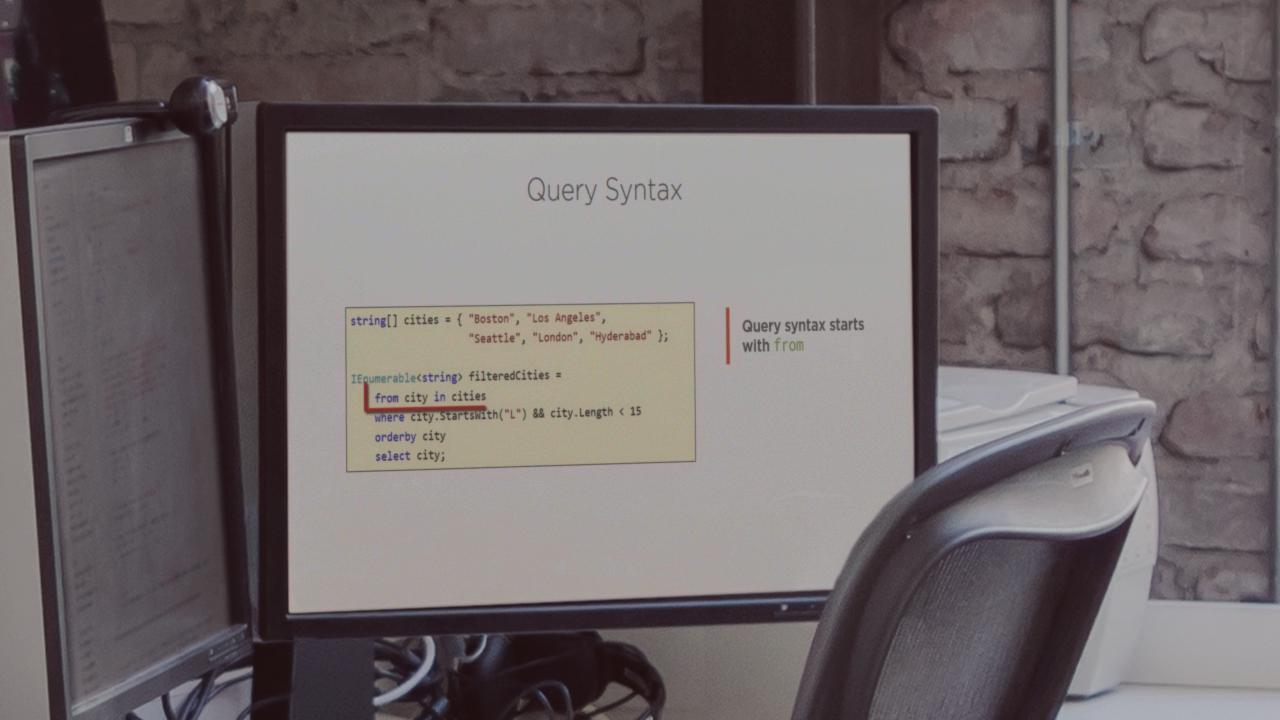- Course
LINQ Fundamentals
Big changes have been made to C# thanks to LINQ. This course will give you everything you need to work with the Language Integrated Query (LINQ) features of C#, using practical examples and demonstrating some best practices.

- Course
LINQ Fundamentals
Big changes have been made to C# thanks to LINQ. This course will give you everything you need to work with the Language Integrated Query (LINQ) features of C#, using practical examples and demonstrating some best practices.
Get started today
Access this course and other top-rated tech content with one of our business plans.
Try this course for free
Access this course and other top-rated tech content with one of our individual plans.
This course is included in the libraries shown below:
- Core Tech
What you'll learn
LINQ introduced radical changes to the C# language. In this course, LINQ Fundamentals you'll see features of the C# language that make LINQ work, as well as how to use LINQ effectively using practical examples. You'll start with seeing a demonstration of the power of LINQ along with some of the important features of the C# language for LINQ, including how to create and use extension methods and lambda expressions. Next, you'll focus on the behavior of LINQ queries and start to work with realistic data to learn how to filter, order, and project data. Finally, you'll see some demonstrations on how to use LINQ to XML as well as, how LINQ works with a remote datasource by using the Entity Framework against Microsoft SQL Server. By the end of this course, you'll be ready to process and query in-memory data, as well as work with XML and a SQL Server database.

